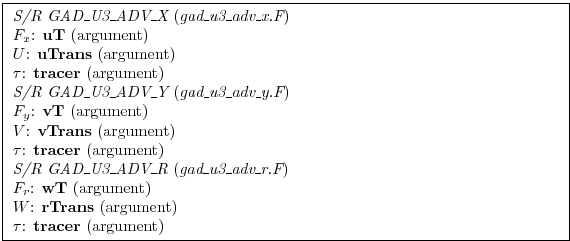 |
 |
|||||||||||
 |
|
|||||||||||
 |
 |
|||||||||||
|
Next: 2.17.3 Centered fourth order Up: 2.17 Linear advection schemes Previous: 2.17.1 Centered second order Contents 2.17.2 Third order upwind bias advectionUpwind biased third order advection offers a relatively good compromise between accuracy and smoothness. It is not a ``positive'' scheme meaning false extrema are permitted but the amplitude of such are significantly reduced over the centered second order method.
The third order upwind fluxes are discretized:
At boundaries,
mitgcm-support@mitgcm.org |
|||||||||||||||







